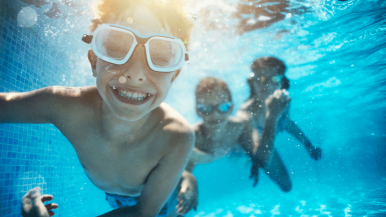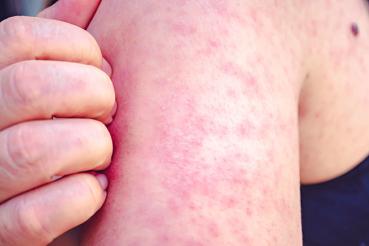School’s out, pools are open and summer is in full swing. While everyone is spending time outside and having fun, it’s important to remember some basic safety rules to ensure your kids enjoy a carefree summer.
Elizabeth Portin, DO, who specializes in pediatrics and sports medicine, shares her tips to help kids and parents stay safe all summer long.
Heat exhaustion
Whether you’re at the beach or in your own backyard, summer days can be brutally hot, leaving children at risk for dangerous heat exhaustion. A great way to avoid heat exhaustion in the summer is to slowly acclimate kids to the heat.
“In Chicago, one day it’s 60 degrees and the next day it’s 100 degrees,” she says. “Don’t overdo it outside, especially when temperatures surge.” Portin suggests spending time outside in small bouts at first and then gradually increasing the amount of time you spend outdoors.
Hydrating before, during and after outdoor activity is crucial — whether kids are playing recreational sports or just out enjoying the sunshine.
“A lot of times kids, especially teens, may not want to drink fluids before playing or before a practice because they don’t want to risk having to use the bathroom,” Portin says. “But fluids are incredibly important. For athletes that are sweating a lot and losing a lot of sodium, drinks with electrolytes like Gatorade are recommended. For recreational play, water is all you need.”
Kids’ clothing also plays a role in summer safety and avoiding heat exhaustion. “Wearing light-colored and loose-fitting clothing made with breathable fabrics is best.”
Parents should keep an eye out for the signs of heat exhaustion, which include the following:
- Headaches
- Dizziness or confusion
- Excessive sweating
- Cramping
Heat exhaustion should be dealt with immediately. If a child begins to experience any disorientation, there could be a concern for heatstroke, which requires emergency care.
Sunscreen and sun safety
Kids need to be protected from ultraviolet rays whenever they’re outdoors. That means taking precautions like wearing hats and sunglasses, avoiding sun exposure during peak hours of 10 a.m. to 2 p.m. when the sun's rays are most dangerous, and slathering on the sunscreen.
“For children younger than 6 months, sunscreen isn’t recommended — it’s really just about staying in the shade and avoiding direct sun exposure,” Portin says. “For children older than 6 months, they need to be wearing sunscreen with SPF 30+ whenever they go outside.”
For the best protection, apply sunscreen at least 20 to 30 minutes before stepping outside and repeat every two hours.
Helmet safety
Whether they’re on bikes, scooters or rollerblades, children should always wear helmets to help prevent serious head or brain injuries. “If you’re riding something with wheels, wear a properly fitting helmet – no exception,” Portin says.
The CDC’s HEADS UP educational initiative is a great resource for learning about proper helmet fit, safety and care.
Water safety
Swimming is one of the best ways to keep cool and have fun during the summer. But whether you’re heading to a neighborhood pool or the lakefront, it’s important to keep water safety top of mind.
Drowning is the single leading cause of injury death for children ages 1 to 4, and one of the top causes of death for teens. Portin says there are several layers of protection that can help prevent drowning, including pool fencing, swim lessons and adult supervision.
“Children starting at age 1 can actually benefit from swim lessons,” she says. “Close and constant adult supervision whenever kids are in or near water, including bathtubs, is the best defense against drowning.”
Always make sure to empty baby pools, buckets and other containers when your kids are done using them. “Drowning can happen quickly and in less than a few inches of water.”
General injury prevention
While kids are out and about throughout the summer months, it’s inevitable they’ll have a few bumps and bruises.
“Just like it’s important to get acclimated to the heat, it’s also important to ease into physical activities to avoid overuse injuries,” she says. “Stress fractures, broken wrists and ankle sprains are especially common among kids during the summer because there is more time for physical activity.”
“It really all comes down to common sense,” Portin says. “Appropriate supervision, especially when children participate in new activities, helps prevent injuries.”
“Despite parents’ best efforts, things can go wrong and accidents happen,” Portin says. “The chance of injury shouldn't deter parents from allowing their children to play, explore and be physically active, even if bumps and bruises ensue.”
Additional Resources




